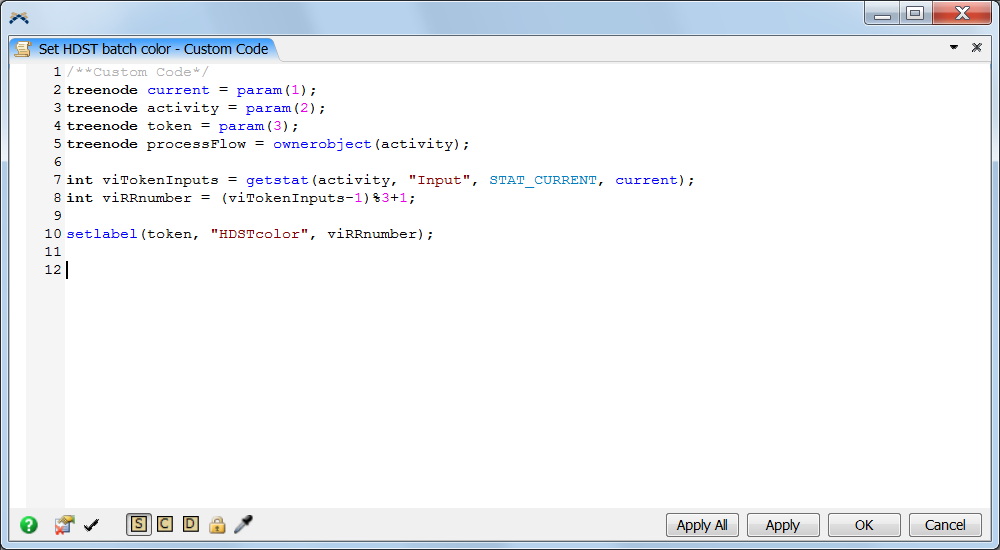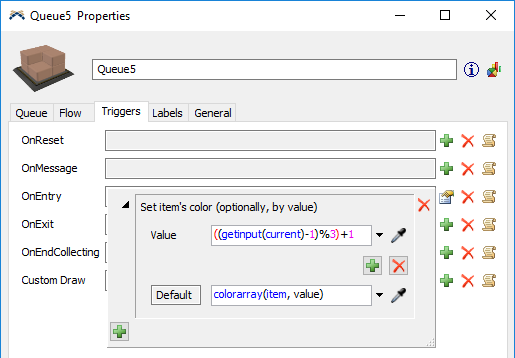I apologize in advance for having to mention another software.... I'm trying to find a way to do a round robin via code. In AutoMod there was such a thing as a nextof distribution so you wrote:
nextof(1,2,3,4) or nextof(red, yellow, blue)
The evaluated value would be whatever came next in the list: 1,2,3,4,1,2,3,4,1...etc. red, yellow, blue, red, yellow, blue, red...
I only want to use this for a very simple operation to cycle colors of items as they come into a manufacturing cell so I can differentiate between batches. I don't expect to round robin through the colors, integers would suffice.



